 W
WAcheilognathus melanogaster is a species of brackish, freshwater ray-finned fish in the genus Acheilognathus. It is endemic to Japan.
 W
WAcheilognathus tabira is a species of ray-finned fish in the genus Acheilognathus. The species is endemic to Japan.
 W
WThe Amur catfish, or Japanese common catfish, Silurus asotus, is a species of catfish (sheatfish), family Siluridae. It is a large freshwater fish found in continental East Asia and in Japan. It prefers slow-flowing rivers, lakes, and irrigation canals. Its appearance is typical of a large silurid catfish. Larval S. asotus specimens have three pairs of barbels, while adult fish have only two pairs ; second pair of mandibular barbels degenerates. This species grows to 130 cm (51 in) in total length.
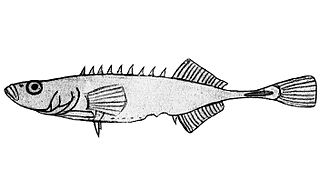 W
WThe Amur stickleback is a species of fish in the family Gasterosteidae. This freshwater, brackish water, or marine benthopelagic fish is usually 6.5 cm in length. It is widespread in East Asia: off the Korean peninsula, northeast and north China, Japan, the Kuril Islands, the Kamchatka peninsula, and the basin of the Amur River.
 W
WThe Biwa trout is an anadromous salmonid fish of the genus Oncorhynchus, endemic to Lake Biwa in Shiga Prefecture, Japan, but also introduced to Lake Ashi and Lake Chūzenji. While called trout, the fish is most closely related to the masu salmon Oncorhynchus masou of the western Pacific, and is most often considered a subspecies of it, Oncorhynchus masou rhodurus.
 W
WBiwia is a small genus of cyprinid fishes containing four species, three of which are endemic to Japan, and a single species from Korea.
 W
WThe Japanese white crucian carp, also known as Japanese carp, white crucian carp, or gengoro-buna, is a species of freshwater fish in the carp family. It is found in Japan and, as an introduced species, in several other countries in Asia. This fish is closely related to the commonly known goldfish.
 W
WThe deepbody bitterling or Itasenpara bitterling is a species of freshwater fish in the family of Cyprinidae. It is endemic to central and southern Japan. It grows to a maximum length of 8.0 cm.
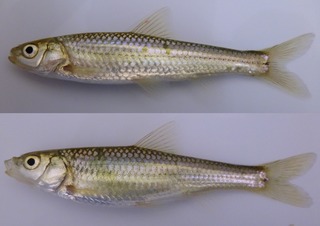 W
WGnathopogon caerulescens is a species of ray-finned fish in the genus Gnathopogon endemic to Lake Biwa in Japan.
 W
WGnathopogon elongatus is a species of ray-finned fish in the genus Gnathopogon endemic to Japan.
 W
WHemigrammocypris rasborella, the golden venus chub, is a species of cyprinid fish endemic to the islands of Honshu, Shikoku and Kyushu in Japan. It is found widely in lowland habitats, including ditches and ponds. It is listed as endangered on the Japanese Red List. H. rasborella is the only species in its genus, but there are significant genetic differences between some populations, comparable to those generally seen between closely related species. It reaches up to 7 cm (2.8 in) in length, but typically is 4–5 cm (1.6–2.0 in). It is a short-lived species that typically reaches an age of about one year. It is listed as endangered in the Red List of Threatened Fishes of Japan.
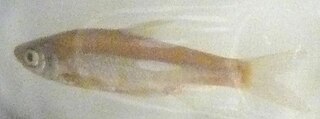 W
WIschikauia steenackeri is a species of cyprinid fish endemic to Lake Biwa in Japan. This species was originally described as Opsariichthys steenackeri. This species is the only member of its genus.
 W
WThe Khanka spiny bitterling is a temperate freshwater fish belonging to the Acheilognathinae subfamily of the family Cyprinidae. It originates in the inland rivers in Asia, and is found in China, Korea, and Russia. It is currently the only known species in its genus.
 W
WThe kirikuchi char, Salvelinus leucomaenis japonicus, is a freshwater fish in the family Salmonidae. It is endemic to the Kii Peninsula of central Honshu in Japan. It is the southernmost population of the char genus Salvelinus and is considered a relict in its region. It is usually considered a subspecies of the whitespotted char Salvelinus leucomaenis but was listed as a separate species in the IUCN Red List (1996).
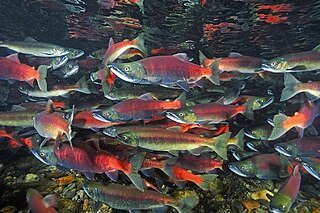 W
WThe kokanee salmon, also known as the kokanee trout, little redfish, silver trout, kikanning, Kennerly's salmon, Kennerly's trout, or Walla, is the non-anadromous form of the sockeye salmon. There is some debate as to whether the kokanee and its sea-going relative are separate species; geographic isolation, failure to interbreed, and genetic distinction point toward a recent divergence in the history of the two groups. The divergence most likely occurred around 15,000 years ago when a large ice melt created a series of freshwater lakes and rivers across the northern part of North America. While some members of the salmon family (salmonids) went out to sea (anadromous), others stayed behind in fresh water (non-anadromous). The separation of the sockeye and the kokanee created a unique example of sympatric speciation that is relatively new in evolutionary terms. While they occupy the same areas and habitats during the breeding season, when ocean-going sockeye salmon return to freshwater to spawn, the two populations do not mate with each other in some regions, suggesting speciation.
 W
WThe lake minnow or swamp minnow is a Eurasian species of small freshwater cyprinid fish. It has a wide but disjunct distribution including parts of Europe and Asia.
 W
WLiobagrus reinii is a species of catfish in the family Amblycipitidae endemic to Japan. This species reaches a length of 9 centimetres (3.5 in).
 W
WThe pond loach,, is a freshwater fish in the loach family Cobitidae. They are native to East Asia but are also popular as an aquarium fish and introduced elsewhere in Asia and to Europe, North America and Australia. The alternate name weather loach is shared with several other Cobitidae, including the other members of the genus Misgurnus and the spotted weather loach. This term comes from their ability to detect changes in barometric pressure and react with frantic swimming or standing on end. This is because before a storm the barometric pressure changes, and this is known to make these fish more active. The pond loach also comes in a variety of colors, such as pink, orange, albino and gray. The largest dojo loach raised in an aquarium recorded was recently discovered in a Nova Scotian home measuring at 8.46 Inches long.
 W
WNekogigi is a species of bagrid catfish endemic to Japan where it is only found in Mie Prefecture on Honshu. It occurs in streams and can grow to a length of 10.8 cm.
 W
WNigoro-buna, sometimes called round crucian carp, is a type of wild goldfish or related cyprinid endemic to Japan. Its habitat is limited to Lake Biwa, its tributaries and distributaries, and irrigation canals, in the Shiga Prefecture, northeast of Kyoto.
 W
WThe oily bitterling is a temperate freshwater fish belonging to the Acheilognathinae sub-family of the family Cyprinidae. It originates in creeks with fast-running water in central and southern Japan. It was originally described as Capoeta limbata by Temminck & Schlegel in 1846, and has also been referred to as Acheilognathus limbatus and Acheilognathus limbata in scientific literature. The fish reaches a size of up to 6 cm (2.4 in) TL.
 W
WOncorhynchus kawamurae, the black kokanee, or kunimasu in Japanese, is a Japanese species of salmon which was thought to had gone extinct in 1940, but was discovered to still have a living population in 2010.
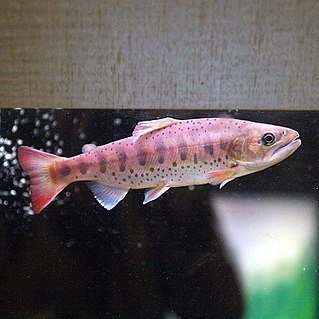 W
WThe amago or the red-spotted masu salmon is a salmonid fish endemic to western Japan, and a subspecies of the more widespread Northwest Pacific masu salmon or cherry salmon. It is distinguished by the presence of red or vermilion spots on the body along with black ones, while the nominate form O. masou masou, known as the yamame, only has black ones. The amago is distributed in western Japan, on the Pacific side of the Honshu and Shikoku islands, and on the Inland Sea of Japan side of Kyushu. The subspecies is a subject of aquaculture. It can grow up to 50 cm (20 in) length.
 W
WCoreoperca kawamebari, commonly known as the Japanese perch, redfin perch, Japanese river perch, Eye-spot perch or in Anglophone parts of Japan, simply the perch, is a predatory species of the freshwater perch native to Japan and southern Korea. They are sometimes kept as pets. The Japanese perch are a member of the perch family but with the predatory feeding behaviour of the black bass (Micropterus) and bluegill.
 W
WThe northern pike is a species of carnivorous fish of the genus Esox. They are typical of brackish and fresh waters of the Northern Hemisphere. They are known simply as a pike in Britain, Ireland, and most of Eastern Europe, Canada and the United States.
 W
WRhinogobius flumineus, commonly known as the lizard goby or kawa-yoshinobori, is a species of goby endemic to Japan where it is found in the mid- to upper reaches of fast-flowing rivers. This species can reach a length of 7 centimetres (2.8 in) TL.
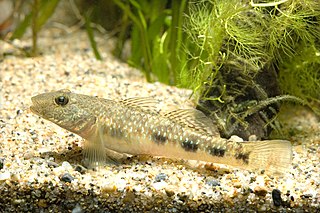 W
WRhinogobius giurinus is a species of goby native to eastern Asia where it inhabits marine, brackish and fresh waters of rivers and estuaries. This species can reach a length of 8 centimetres (3.1 in) TL. It is of importance to local peoples as a food fish.
 W
WThe coho salmon is a species of anadromous fish in the salmon family and one of the five Pacific salmon species. Coho salmon are also known as silver salmon or "silvers". The scientific species name is based on the Russian common name kizhuch (кижуч).
 W
WSilurus biwaensis, the giant Lake Biwa catfish or Biwako-o'namazu, is a large predatory catfish species endemic to Lake Biwa in Japan.
 W
WThe Sakhalin stickleback is a fish of the family Gasterosteidae. It is a freshwater benthopelagic fish, that grows up to 7.0 cm in length. It is endemic to the islands of Hokkaido and Sakhalin.
 W
WThe striped bitterling is a species of freshwater ray-finned fish in the genus Acheilognathus. It is endemic to Lake Biwa and Lake Yogo in Japan. It typically grows to a length of 6.0 cm.
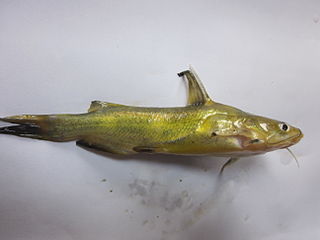 W
WTachysurus fulvidraco, the yellowhead catfish or Korean bullhead, is a species of bagrid catfish found in eastern Asia from Siberia to China, Korea, Vietnam, and Laos, where it can be found in lakes and river channels. It can reach a maximum length of 34.5 cm, weighing 3 kg, though it is much more commonly found to a length of 8 cm. It is a minor component of commercial fisheries.
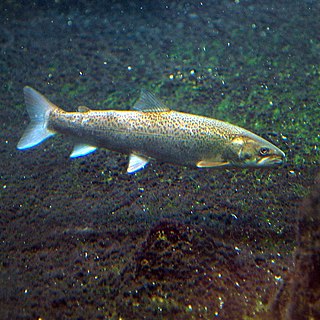 W
WThe Sakhalin taimen, also known as the Japanese huchen or Stringfish, is a large, East Asian species of fish in the salmon family (Salmonidae). It is found in the Primorsky Krai and Khabarovsk regions of eastern Russia, Sakhalin Island, the Kuril Islands and Hokkaido, Japan and inhabits lakes and large rivers. The population has been in general decline for a century at least. Contributory factors include degradation of the environment by logging, oil exploration and change of land use to agriculture. The fish is caught by commercial fishing as bycatch, by recreational anglers and illegally by poaching, and present populations are estimated to be less than 5% of their historic levels. The International Union for Conservation of Nature has rated the fish as being critically endangered. Although often placed in the genus Hucho, molecular phylogenetic and other evidence has shown that it belongs in its own monotypic genus Parahucho sister to Salmo.
 W
WTanakia lanceolata is a temperate freshwater fish belonging to the Acheilognathinae sub-family of the family Cyprinidae. It originates in inland waterways in China, Japan and the Korean peninsula. It was originally described as Capoeta lanceolata by Temminck & Schlegel in 1846, and has also been referred to as Acheilognathus lanceolata and Acheilognathus lanceolatus in scientific publications. Its Korean name is 납자루, and in Japanese is known as ヤリタナゴ
 W
WThe Tokyo bitterling is a temperate freshwater fish of the carp family (Cyprinidae). Taxonomically, it belongs to the subfamily Acheilognathinae.